Checking out Backcountry Snow (5 Nov 2014)
(Last Updated On: )
This weekend brought the first significant snowfall we’ve had since mid-October. Happy to see the fluffy white stuff again, we were also tentative about how it would react to old rotting snow that fell two and 4 weeks prior. Our instincts to stay at home a couple of days to let things settle proved to be wise as CBAC reported an avalanche in Jenga chute triggered by two skiers who were booting up it. They were both okay, and we thank them for sharing their experience.
Early season skiing usually has me pretty wary. And, if anything, I like to head out into the backcountry just as much to find out what’s going on with our snowpack as much as to make the turns. Thankfully, Ben and Susan were on board with a scoping and skiing mission. So, we headed out to the same vicinity where the slide occurred two days prior to seek out the weaknesses in the snowpack.
Skinning up the east-facing bowl.
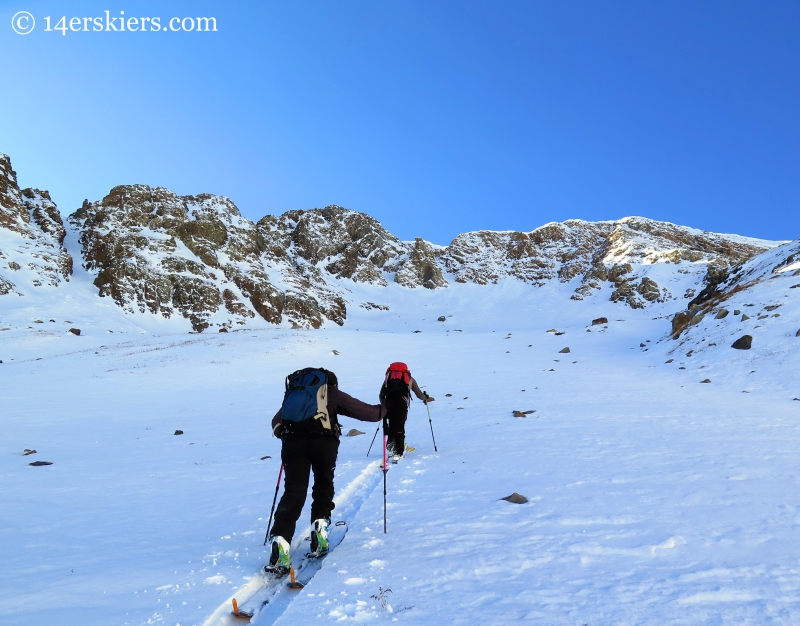
Jenga Chute, the location of the slide two days before.
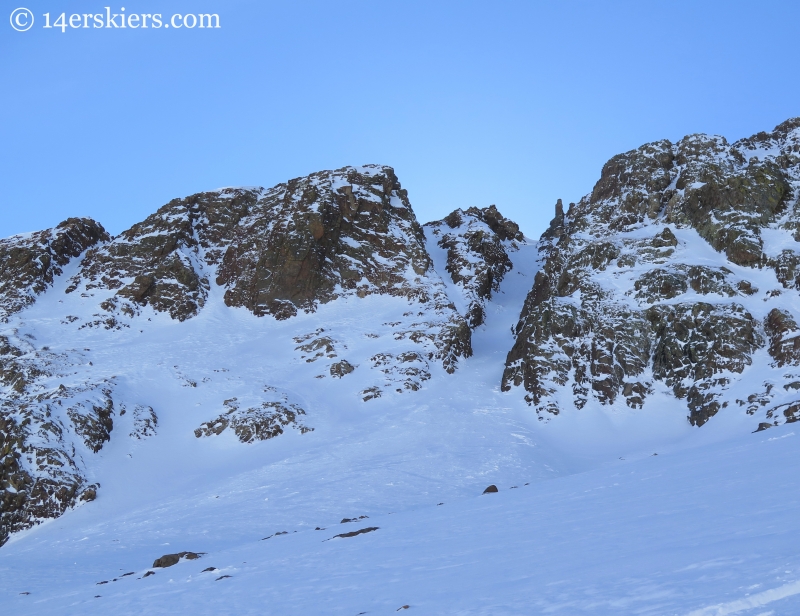
You can see the crown of the avalanche near the top of the line.
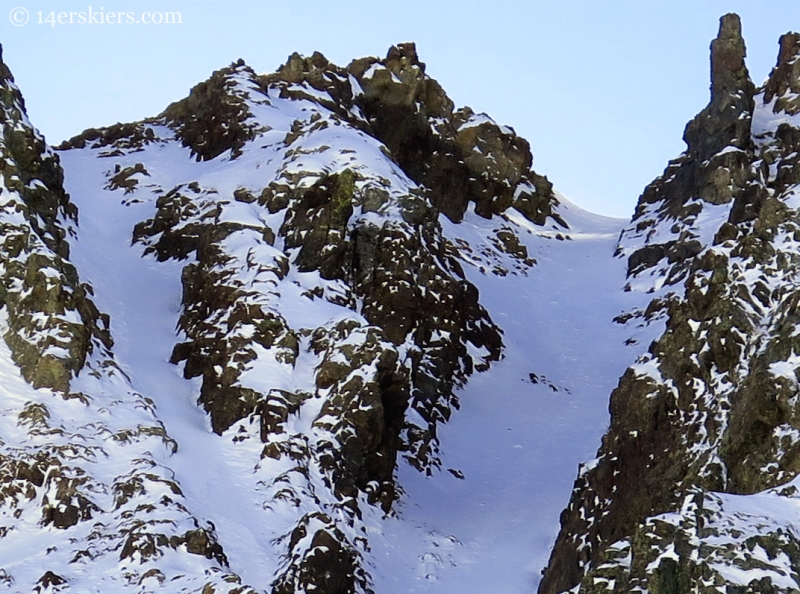
See the CBAC report here:
Jenga Chute wasn’t in our plans, but the bowl above it was. So, upward we went.
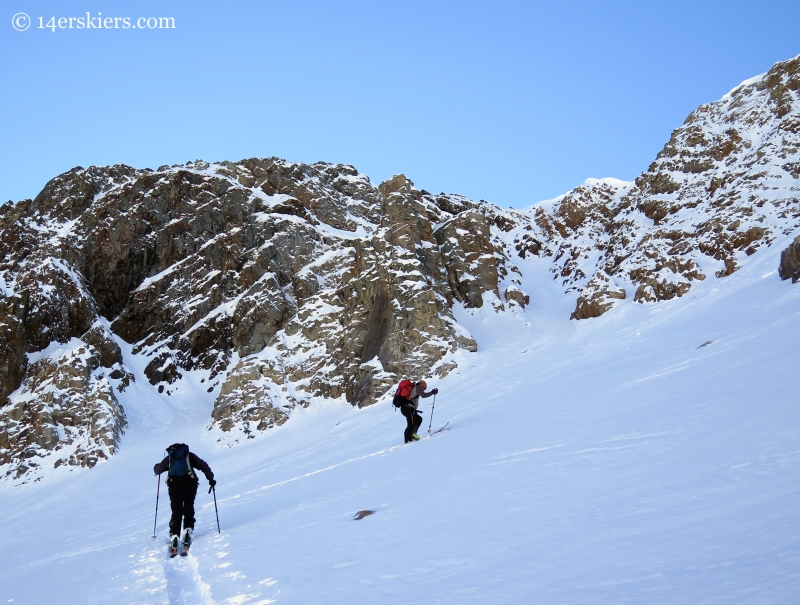
The snow wasn’t moving. But, with a 2-3 inch windslab layer on the top that was sometimes very stiff, we decided to do a bit of inspecting. First pit:
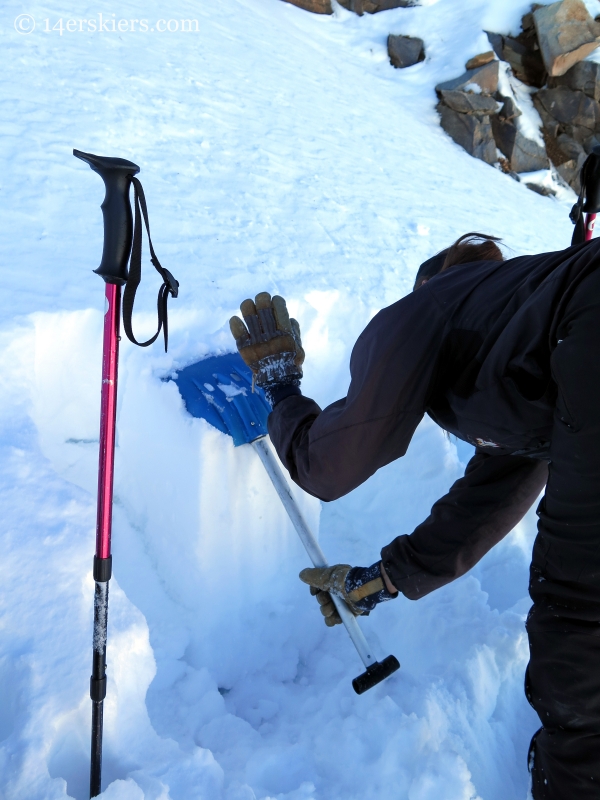
The second one was almost “person-deep” before we reached the ground.
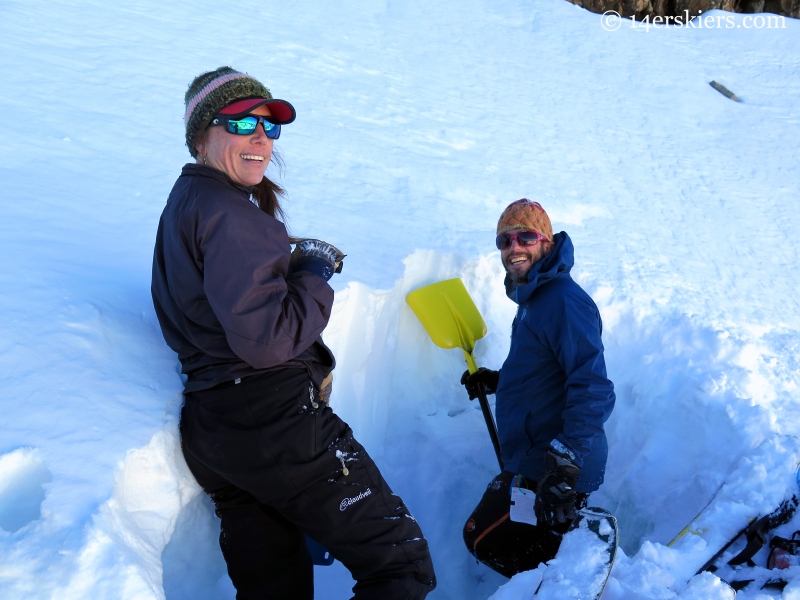
Both pits were E-NE facing, capped with a 2-3 inch soft windslab, followed by the rest of the storm snow, followed by a hard melt-freeze layer from mid-Oct with another layer of that storm snow, followed by another hard melt-freeze layer from late-Sept/early-Oct, on top of a 2 inch layer of softer wet snow (not facets) on the ground. We performed a series of compression tests and found that the weak spot was on an apparent graupel layer in the new snow about 2 inches above the hard melt-freeze layer from mid-Oct. This layer failed consistently with taps in the mid-20’s. Shear Quality was 2 or 3, and it lacked energy overall.
We felt pretty good about the snow conditions – probably a lot different than the conditions experienced while it was snowing two days ago. So, we continued further up the bowl.
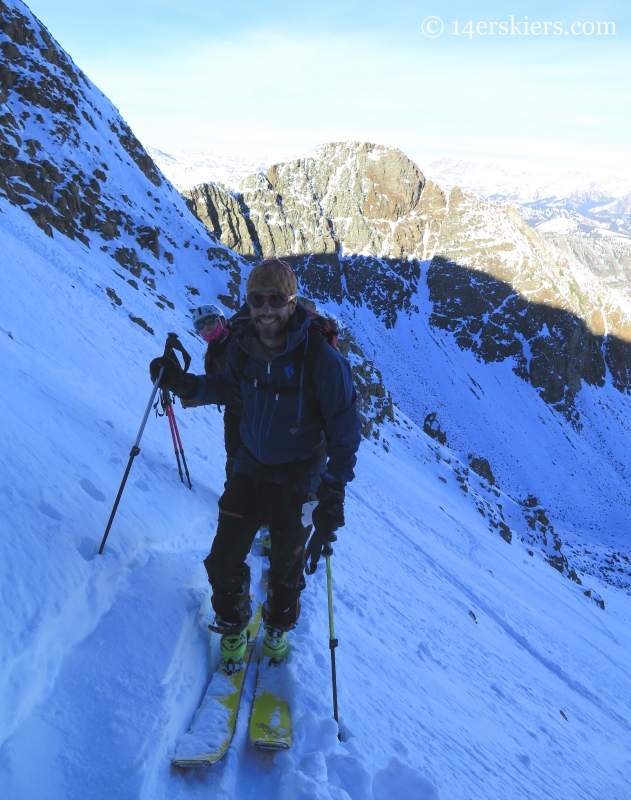
After reaching the upper boundaries of the bowl, we transitioned and turned our way down the slopes we’d ascended. Ben.
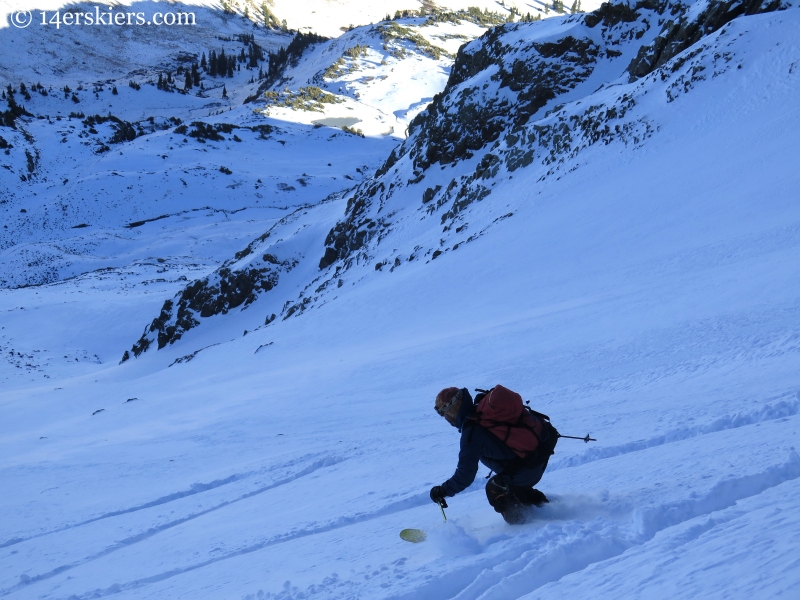
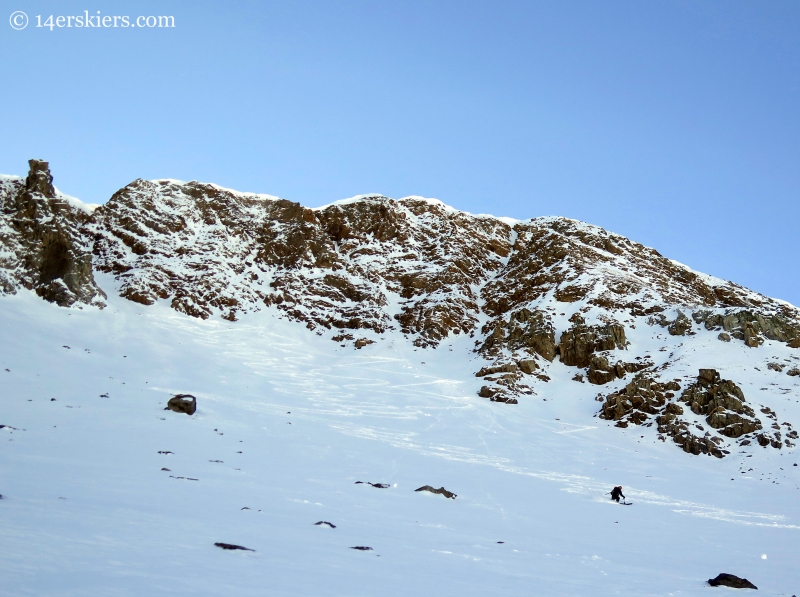
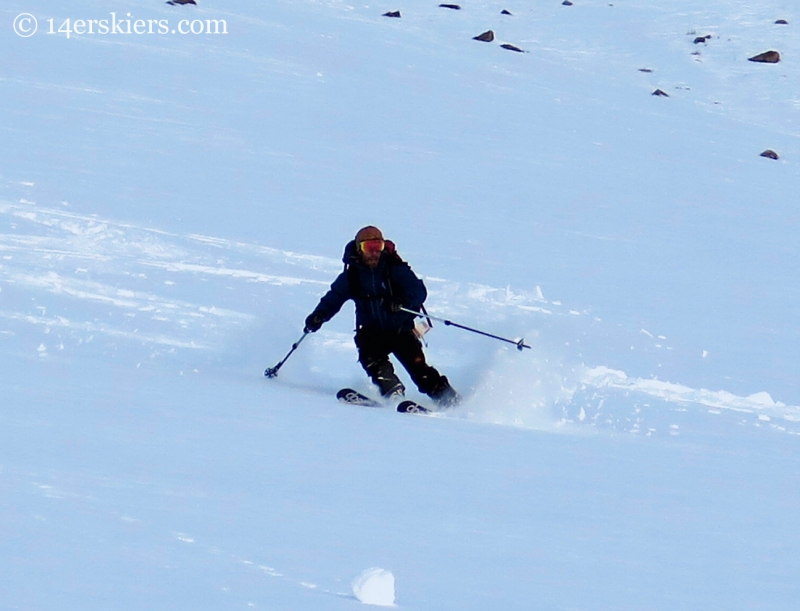
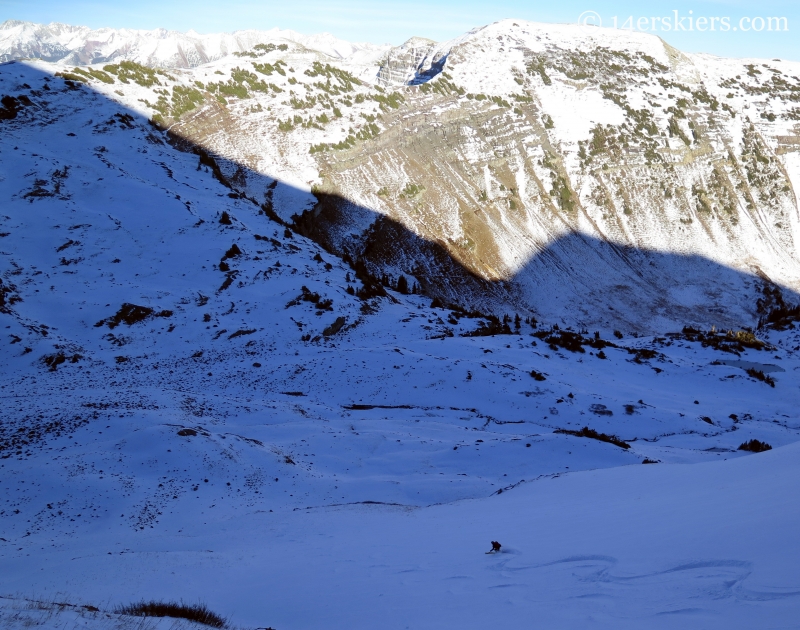
The wind crust that capped the snow was avoidable by looking for the right kind of ripply snow – and of course by skiing just a little faster to power through it. Me.
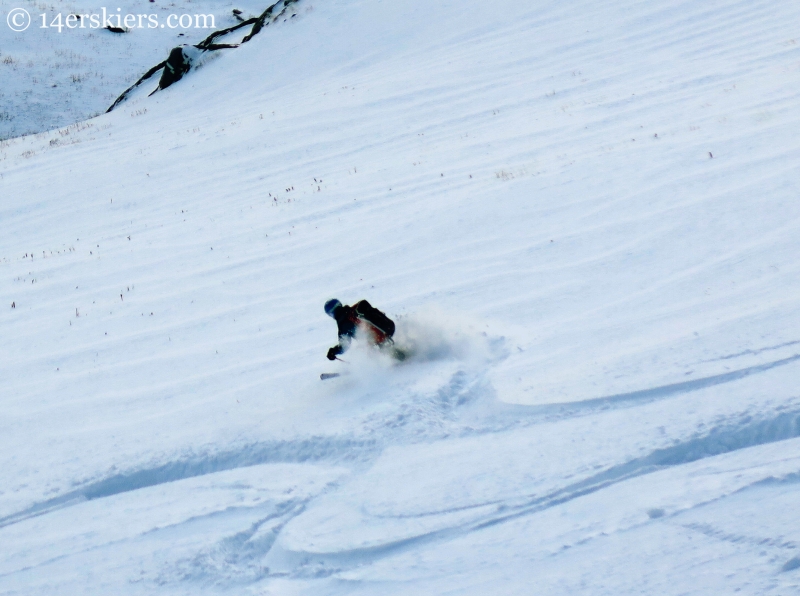
Susan.
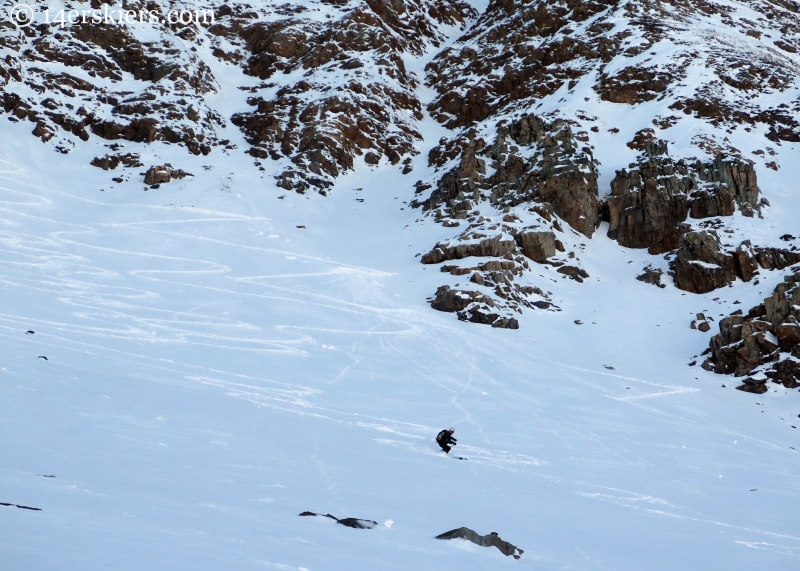
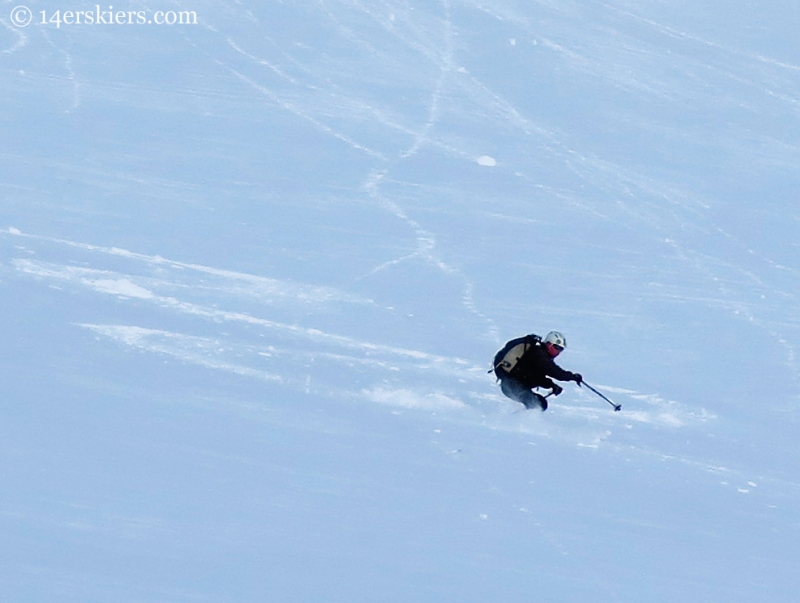
A shot of Ruby on the way out:
We were glad to have spent some time checking out backcountry snow in the Crested Butte area, and surprised to find more stable conditions than we anticipated. Still, the snowpack did lurk of potential layers that could prove to haunt us as deep instabilities later in the season. Let’s hope that we get more snow soon as a deeper snowpack is usually a more stable snowpack 🙂 Until then, enjoy some turns. It’s pretty fun out there!
- Mount Buckskin (17 May 2020) - May 28, 2020
- Horseshoe Ski (14 May 2020) – The mountain whose journey nearly killed me - May 27, 2020
- Sayres X-Rated Ski (10 May 2020) - May 19, 2020

